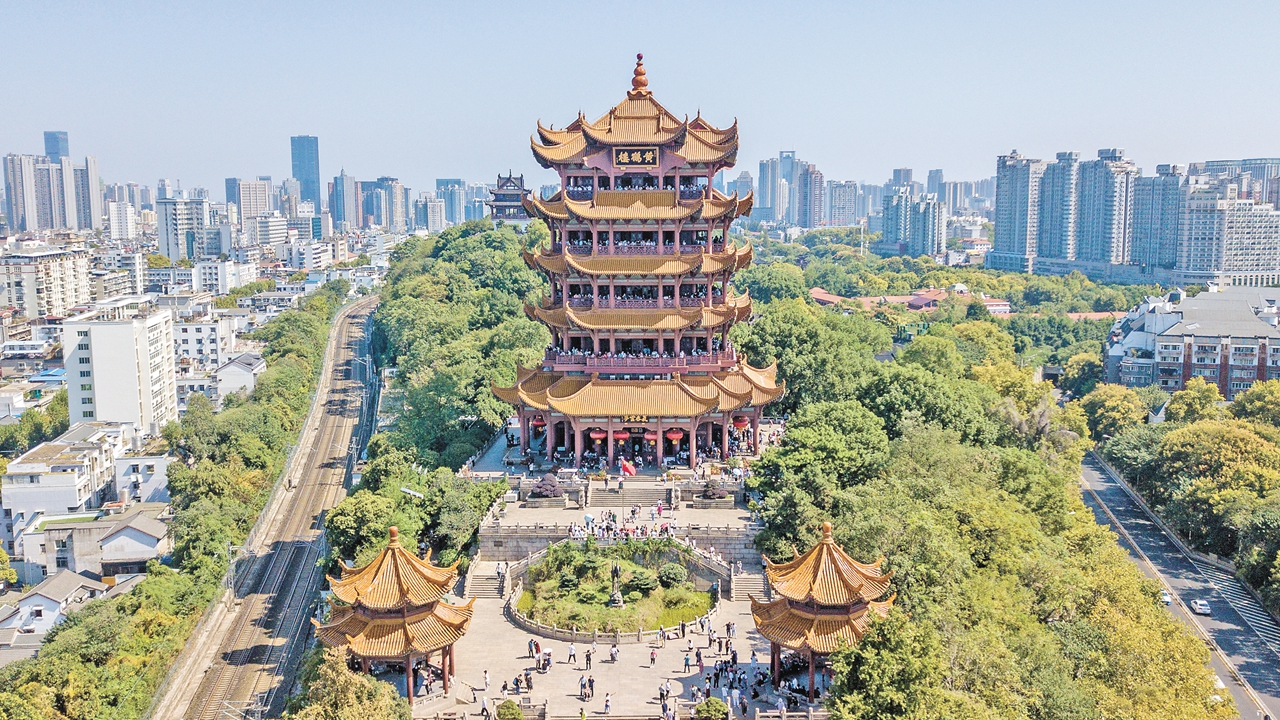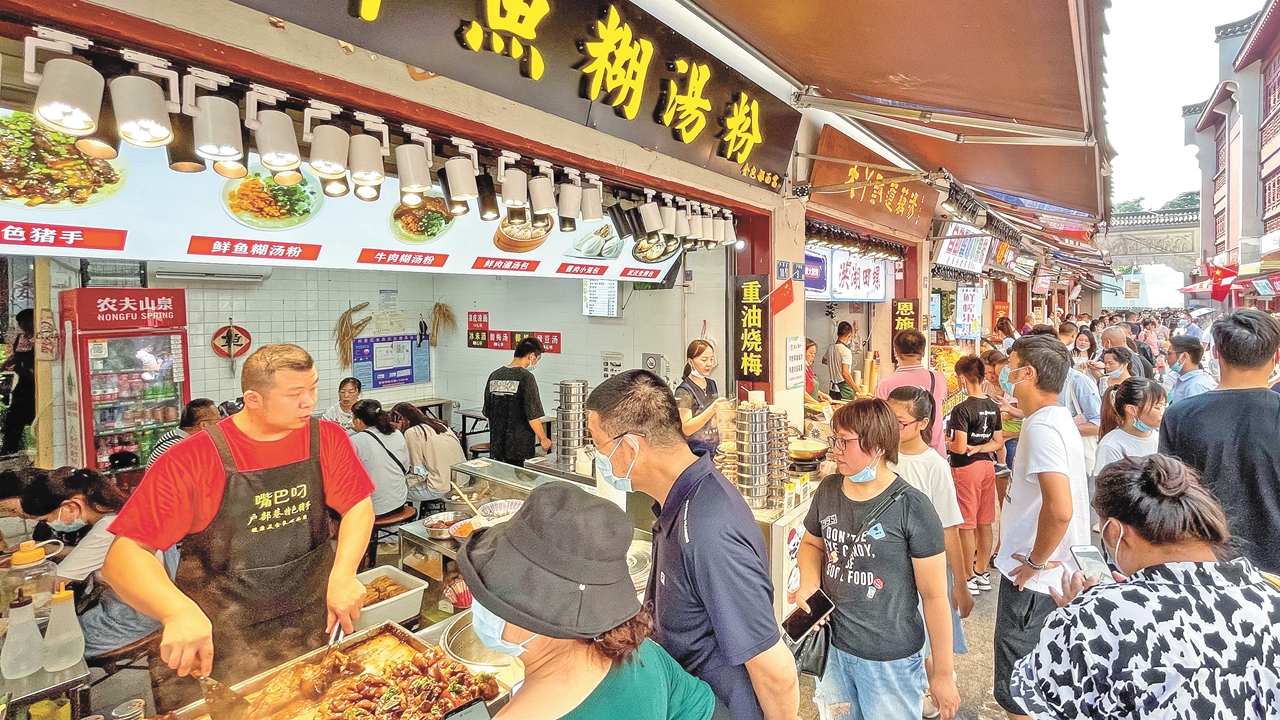A cultural odyssey: Experience history, culture and heritage in Hubei (I)
Writer: Wei Jie | Editor: Lin Qiuying | From: Shenzhen Daily | Updated: 2025-01-06
Hubei Province is located in central China. It is naturally endowed with stunning landscapes featuring unique mountains and beautiful waters. Culturally, its rich history that dated back to the Three Kingdoms Period (220-280) offers a profound array of intangible cultural heritage resources.
Recently, Hubei released a travel guide on “Eight Unique Tourism Routes for Intangible Cultural Heritage,” inviting both domestic and international guests to embark on a journey to the province.
Here we select four routes for you to experience Hubei’s excitement and allure.
Wuhan
As the capital city of Hubei Province, Wuhan is home to the Hubei Provincial Museum, a leading institution for the collection and exhibition of cultural relics, as well as an important research center for archaeological exploration and preservation in the province. Chime bells from the Tomb of Marquis Yi on display at Hubei Provincial Museum. Photos by Xinhua
Chime bells from the Tomb of Marquis Yi on display at Hubei Provincial Museum. Photos by Xinhua
Here at the museum, you’ll see the chime bells from the Tomb of Marquis Yi of the Zeng State dating back to the early Warring States Period (475-221 B.C.). Unearthed in Suixian County in 1978, the chime bells measure 7.84 meters in length and 2.65 meters in height. Arranged in eight groups across three layers on a curved copper-and-wood frame, the collection consists of 65 bells that can play contemporary music.
Another notable artifact housed in the museum is the Sword of Goujian, King of the Yue State from the Spring and Autumn Period (770-476 B.C.). The 55.7-centimeter-long sword is renowned for its exceptional sharpness and represents a masterpiece of ancient craftsmanship. The blade of the sword is adorned with a black diamond pattern, featuring blue glaze on the front side and turquoise on the reverse. Close to the hilt are the bird seal inscriptions that read “Sword of Goujian, King of Yue.”
The museum also showcases many other relics unearthed in Hubei Province, including the blue-and-white plum vase with figures of the Yuan Dynasty (1271-1368).

The Yellow Crane Tower is a cultural landmark of Wuhan.
Another must-visit site in Wuhan is the Yellow Crane Tower, or the Huanghe Tower, standing atop the Sheshan Hill in Wuchang, which constitutes the metropolitan of Wuhan along with Hankou and Hanyang. It is recognized as one of the three cultural landmarks in Wuhan, alongside the Qingchuan Pavilion and the Guqintai.
Originally built in 223 A.D. as a watchtower for the army during the Three Kingdoms Period, the Yellow Crane Tower has undergone multiple renovations over the years. The current structure, built in 1985, is based on the design of the Tongzhi Tower from the Qing Dynasty (1644-1911). The 51.4-meter-tall tower has a uniform appearance from any direction. Its roof is covered with 100,000 yellow glazed tiles, and the yellow upturned eaves of each floor resemble a yellow crane spreading its wings.

Visitors experience the “guozao” culture on Hubuxiang Road in Wuhan.
When in Wuhan, you’ve got to experience its signature “guozao” culture, which refers to breakfast in English. Wuhan’s guozao culture is celebrated for its wide variety, exquisite combinations, exceptional preparation, affordability, and generous portions. Head to the popular food streets in Wuchang and Hankou to grab a bite of Lao Tongcheng’s Bean Pan filled with eggs, rice, beef, mushrooms and beans; Cai Linji’s hot dry noodles with sesame paste, and Tan Yanji’s dumplings — all intangible cultural heritage items.
Xiangyang
Located in the northwest part of Hubei Province, Xiangyang City boasts a history of over 2,800 years and is rich in culture. Historically, it has been a battleground for different military forces, and a place where countless scholars and poets lingered. In ancient times, Xiangyang was referred to as “the first city of China” and “the ironclad Xiangyang.” Its rich history bestows a unique charm upon the city.

A scene from Xiangyang Ancient Town.
Xiangyang Ancient Town is a well-preserved ancient fortress that still stands tall after enduring millennium of storms, and witnessing numerous historical changes. Walking along the city walls offers a panoramic view of Xiangyang’s cityscape and allows you to feel the grand majesty of this ancient town.
Life inside the ancient town retains its traditional charm, with the ancient streets, houses featuring blue brick and black tiles, as well as an array of unique snacks.
The Longzhong area, known for the historical tale of “the three visits to the thatched cottage,” carries immerse historical and cultural heritage. Zhuge Liang, a prominent strategist during the Three Kingdoms Period, lived in seclusion in ancient Longzhong for 10 years. Strolling through the area, you will encounter temples and ancestral halls, as if traveling through time back to the era of fierce competitions among warlords during the Three Kingdoms Period.
Also known as the Gaoyang Pond, the Xijia Pond was the private garden of Xi Yu, the governor of Xiangyang during the Eastern Han Dynasty (25-220 A.D.). It is one of the earliest existing private gardens in China, and has maintained its ancient elegance for more than 1,800 years.
Migong Temple is a memorial hall honoring the famous calligrapher and painter Mi Fu of the Northern Song Dynasty (960-1127). Mi was celebrated as one of the “Four Masters of the Song Dynasty.”
As you explore areas like Laohekou, Baokang, and Yicheng in Xiangyang, you can appreciate intangible cultural heritage projects such as Laohekou woodblock New Year paintings, gong and drum art, and Xiangyang flower drum opera.